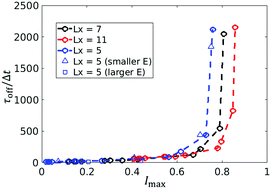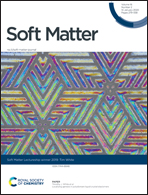Dynamics control of an in-plane-switching liquid crystal cell using heterogeneous substrates
Abstract
The control of surface anchoring strength can be achieved by using heterogeneous substrates. In contrast to conventional substrates that control the anchoring strength by using temperature or chemical processes, heterogeneous substrates provide surface anchoring to liquid crystal molecules by using a mixed composition of (1) a zero anchoring surface and (2) planar-anchoring patches. To study the dynamics of in-plane-switching liquid crystal displays (IPS-LCDs) under external fields, a new particle-based numerical algorithm is developed to simulate both nematic liquid crystals and heterogeneous surfaces. This new method allows us to create different heterogeneous surfaces easily by adopting predefined distributions of numerical particles. The generated effective anchoring strength from the heterogeneous surface is thus calculated, and the dynamical response is found to be similar to that of conventional homogeneously processed substrates. The results suggest that the use of a heterogeneous LCD cell is a suitable alternative for creating desirable LCD substrates, for which chemical/temperature dependence can be transferred to a more controllable configurational dependence. Interestingly, we found master curves in the peak transmittance/recovery time phase space, and they appeared to be dependent solely on the cell thickness. This discovery clarifies the fundamental optical dynamics of IPS-LCD cells.



 Please wait while we load your content...
Please wait while we load your content...